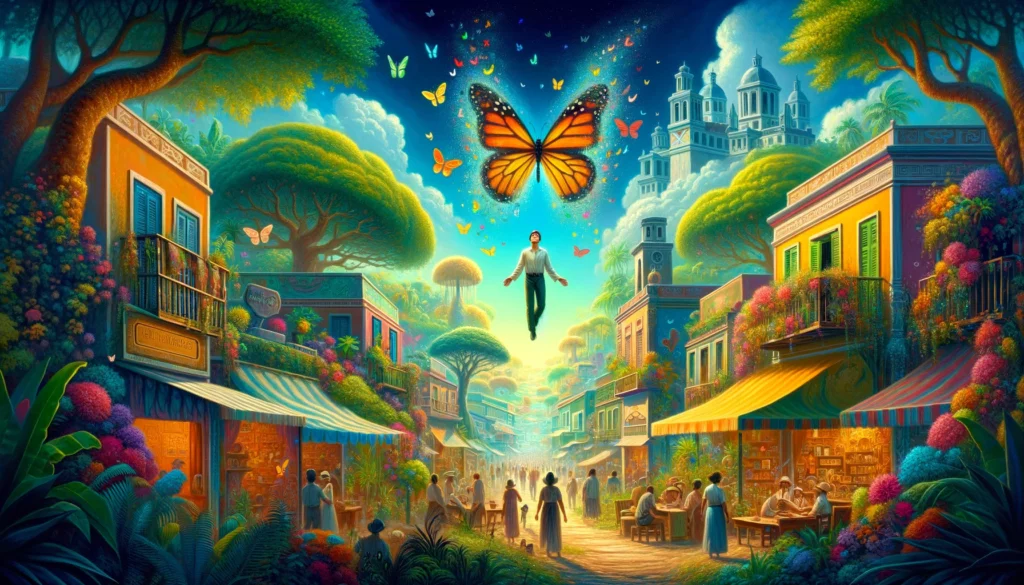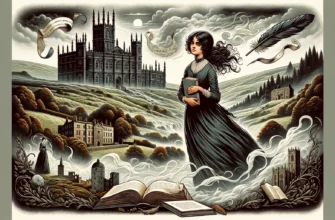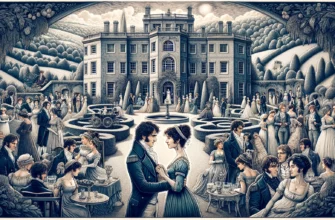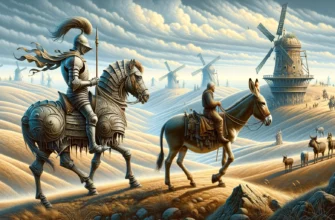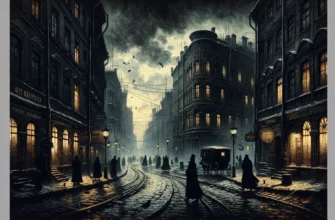One Hundred Years of Solitude: The World of Macondo
Macondo, the fictional town at the heart of “One Hundred Years of Solitude,” mirrors Latin America’s broader societal and political changes. Gabriel García Márquez, born in Aracataca, Colombia, in 1927, drew heavily from his upbringing to create this mythical place.
The town’s inception, a remote and tranquil village, symbolizes the isolated nature of Latin American cities in the early 20th century. As the story progresses, Macondo evolves, encapsulating the turbulence of the outside world, including technological advancements and foreign influence, which infiltrate and ultimately transform the town’s fabric.
The transformation of Macondo is not just physical but also ideological. Initially, the town is characterized by innocence and isolation, much like the continent before colonization and globalization.
However, with the arrival of characters such as the gypsies, led by Melquíades, and the establishment of the banana plantation by American companies, Macondo transitions into a hub of activity and chaos. These changes allegorically represent Latin America’s cultural and economic colonization, highlighting the clash between tradition and modernity.
Gabriel García Márquez’s “One Hundred Years of Solitude” is a monumental achievement among great classic novels. It merges the fantastical with the real and offers profound insights into the human condition and the rich tapestry of Latin American history.
The evolution of Macondo is also marked by significant events that align with historical occurrences in Colombia and Latin America. Notable amongst these is the massacre of the banana workers, a direct reference to the Banana Massacre of 1928 in Colombia.
This event, along with others portrayed in the novel, underscores the impact of foreign capital and political turmoil on the town’s social and moral fabric, illustrating a microcosm of the broader Latin American experience.
The Buendía Family Saga – A Tapestry of Characters
At the heart of “One Hundred Years of Solitude” is the Buendía family, whose lineage spans seven generations throughout the novel. José Arcadio Buendía, the family patriarch, establishes Macondo, setting the stage for a saga marked by passion, ambition, and a recurring curse of solitude.
The characters, each bearing the names José Arcadio or Aureliano, reflect different facets of human nature and societal roles. The repetition of names symbolizes the cyclical nature of history and the inescapability of familial legacy.
The women of the Buendía family, notably Úrsula Iguarán, play pivotal roles in holding the family together amidst the chaos. Úrsula, with her practical wisdom and indomitable spirit, often acts as the moral compass and the anchor of the family.
The character of Amaranta, her daughter, represents unfulfilled desire and bitterness, further enriching the tapestry of the family’s saga. Each character’s unique quirks and fates contribute to the theme of solitude and the quest for meaning amidst the tumult of existence.
The Buendía family’s narrative is not linear but a complex web, with each character’s story intricately woven into the next. The recurring themes of love, power, and death intersect with historical events and myths, creating a rich tapestry. The characters’ struggles and triumphs reflect the broader human experience, resonating with readers and inviting introspection about destiny, free will, and the cyclical nature of life.
Magical Realism – Blending Fantasy and Reality
“Magical Realism” is a literary style that flawlessly merges the ordinary with the extraordinary, and “One Hundred Years of Solitude” is a masterpiece of this genre. In the novel, Gabriel García Márquez introduces fantastical elements as a natural part of the world, creating a seamless blend of reality and fantasy. This narrative technique captivates readers, inviting them to explore the boundaries of their imagination and perception of reality.
Iconic instances of magical realism in the novel include Remedios the Beauty ascending to the heavens while folding sheets and the character of Melquíades, who lives beyond death and brings a manuscript that predicts the future.
While fantastical, these elements are presented in a matter-of-fact tone, making them integral parts of the narrative. This narrative style blurs the line between the real and the surreal, prompting readers to question the nature of reality and accept the extraordinary as part of the everyday experience.
Magical realism in the novel serves more than just an aesthetic purpose; it acts as a vehicle for deeper commentary on social, political, and human conditions. Through this lens, Márquez addresses complex themes such as time, memory, and solitude, presenting them enchanting and profoundly.
The story’s magical elements underscore the surreal aspects of Latin American history and the universal human experience, making the novel a literary masterpiece and a profound commentary on life itself.
Political Undertones and Historical Context
“One Hundred Years of Solitude” is not just a family saga but also a political allegory reflecting the tumultuous history of Latin America. The novel weaves together personal and political narratives, depicting the impact of national and international events on the lives of the Buendía family and the residents of Macondo.
Through the novel’s lens, Gabriel García Márquez critiques the pervasive violence, corruption, and instability that characterized the region’s political landscape.
One of the most striking political events depicted in the novel is the Banana Massacre, mirroring the real-life massacre of banana plantation workers by the United Fruit Company in Colombia in 1928.
This event symbolizes the exploitation and oppression of Latin American people by foreign corporations and complicit local governments. The depiction of the massacre and its aftermath highlights the themes of injustice and the struggle for social and economic rights, resonating with the broader context of Latin American history.
The novel also delves into the cyclical nature of political power and violence, as seen in the repeated civil wars and the rise and fall of leaders in Macondo. Characters such as Colonel Aureliano Buendía embody the revolutionary spirit, yet their efforts seem in vain as the cycle of oppression and rebellion continues unabated.
Through these narratives, Márquez offers a poignant critique of the political instability and the illusion of progress, reflecting Latin America’s complex and often tragic history.
The Role of Women in Macondo
Women in “One Hundred Years of Solitude” are central to the narrative, often embodying strength, wisdom, and resilience amidst the unfolding tumultuous events. Úrsula Iguarán, the matriarch of the Buendía family, is a prime example of this strength.
Her pragmatic approach to life, unwavering determination, and deep connection to her family’s well-being and the future of Macondo establish her as a pillar of stability and continuity. Úrsula’s role transcends the domestic sphere as she becomes a moral and rational counterbalance to her family’s often impulsive and obsessive men.
Contrasting Úrsula’s stabilizing presence are characters like Amaranta and Pilar Ternera, who represent different aspects of femininity and social norms. Amaranta’s life, filled with passion, jealousy, and unfulfilled desires, reflects the complexities of human emotions and the consequences of personal choices.
Pilar Ternera, with her mystical abilities and central role in the lineage of the Buendía family, embodies the blend of the earthly and the supernatural that is a hallmark of the novel. Through their interactions and influence on the story’s events, these characters highlight the intricate web of human relationships and women’s pivotal role in the fabric of Macondo.
The portrayal of women in the novel also critiques the societal norms and gender roles prevalent at the time. The female characters often find themselves at the crossroads of personal desires and societal expectations.
Their struggles for love, power, and independence are depicted against the backdrop of a society in flux, reflecting the broader themes of change, tradition, and the quest for individual identity. Through these characters, Márquez enriches the narrative and offers insight into the complexities of human nature and the societal constructs that shape our lives.
Time and Memory – A Circular Conception
In “One Hundred Years of Solitude,” time does not follow a linear path. Instead, Gabriel García Márquez presents time as a circular, repetitive cycle where history echoes itself, and characters seem destined to repeat the lives and mistakes of their ancestors.
This unique narrative structure reflects the novel’s themes of fate, history, and the inescapability of one’s heritage. The repeated names within the Buendía family, coupled with recurring events, underscore the notion that time is a loop, with each generation doomed to relive the triumphs and failures of the past.
Memory, or often the lack thereof, is critical in shaping the characters’ destinies. The town of Macondo itself, at times, seems to suffer from collective amnesia, with characters unable or unwilling to learn from the past.
This forgetfulness is symbolically represented in the novel by the plague of insomnia, which leads to the loss of memory and, consequently, the loss of identity. This motif highlights the importance of memory in preserving history, culture, and personal identity and serves as a commentary on the human tendency to forget past lessons.
The novel’s ending, where the cyclical nature of time is most profoundly realized, reinforces the inevitability of this repetition and the futility of attempting to escape one’s predetermined destiny.
The revelation that the Buendía family’s history has been written for generations in Melquíades’ parchments suggests a preordained fate, emphasizing the novel’s fatalistic view of time and history. This perspective invites readers to reflect on the nature of human existence, the cyclical patterns in our own lives, and the role of memory in shaping our understanding of the world.
Legacy and Influence of the Novel
Since its publication in 1967, “One Hundred Years of Solitude” has emerged as a monumental work in world literature, leaving an indelible mark on readers and writers alike.
The novel’s influence extends beyond the literary realm, impacting culture, politics, and social understanding. Its innovative narrative style, rich storytelling, and profound thematic depth have earned it critical acclaim, positioning Gabriel García Márquez as one of the most important writers of the 20th century.
The novel’s contribution to magical realism has been particularly significant. Márquez’s ability to seamlessly integrate the fantastical with the mundane has inspired many writers and has become a defining characteristic of Latin American literature.
The novel’s success also sparked increased interest in and recognition of Latin American culture and history, contributing to a richer global literary dialogue and fostering a greater appreciation for the diversity of narrative forms and perspectives.
The impact of “One Hundred Years of Solitude” is also evident in its widespread academic study and cultural references. The novel has been analyzed for its themes, narrative techniques, and historical allegories, making it a staple in literary curriculums worldwide.
Its influence on popular culture is unmistakable, with references to its characters, themes, and narrative style appearing in various forms of media. The legacy of “One Hundred Years of Solitude” is a testament to the power of literature to transcend borders, cultures, and generations, offering a timeless exploration of the human condition.
